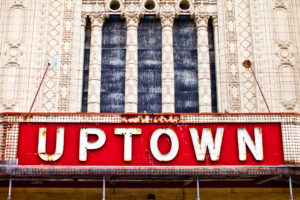Neighborhood Spotlights: Exploring the Vibrant Lifestyle of Chicago’s Diverse Communities

Photo by kathyng7210 on Pixabay
Chicago, the Windy City, is a bustling metropolis that captivates visitors and residents alike with its vibrant neighborhoods and diverse cultures. From the historic architecture to the thriving music scene, there is something for everyone in this dynamic city. In this article, we will take a closer look at some of Chicago’s most exciting neighborhoods and the unique lifestyles they offer.
1. Uptown: A Cultural Haven

Image Source: Unsplash
A Brief History
Uptown, located on Chicago’s North Side, has a rich history that dates back to the early 1900s. Originally a summer resort town for downtown dwellers, it quickly transformed into a densely populated neighborhood for working-class and immigrant families. During the Roaring Twenties, Uptown became a hub for entertainment, with numerous theaters and music venues dotting the area.
Culture and Entertainment
Uptown’s vibrant music scene continues to draw crowds from all over. The historic Aragon Ballroom, built in 1926, has hosted legendary musicians like Frank Sinatra, Nirvana, and Prince. Another iconic venue, the Riviera Theatre, showcases a variety of concerts and events throughout the year. For jazz enthusiasts, the legendary Green Mill Jazz Club is a must-visit, with its speakeasy atmosphere and world-class performances.
Uptown also boasts a thriving art scene, with galleries, theaters, and cultural events. The annual Uptown Art Fair is a highlight, featuring the works of over 350 artists and attracting hundreds of thousands of visitors.
Architecture
Uptown’s architecture reflects its diverse history. From Victorian-era buildings to Art Deco and Mid-Century Modern designs, the neighborhood showcases a range of architectural styles. Streets like Dover, Beacon, and Malden Street are particularly enchanting, with their vintage homes featuring unique details such as stained glass windows, ornate moldings, and original hardwood floors.
Whether you’re exploring Uptown’s cultural hotspots, immersing yourself in its music scene, or admiring its architectural gems, this neighborhood offers a vibrant lifestyle that celebrates both its past and present.
2. Exploring Native American Art with Chris Pappan
Chicago is not only a hub for diverse neighborhoods but also a thriving art scene that celebrates various cultures. One artist making waves in the city is Chris Pappan, a nationally recognized painter of Osage, Kaw, Cheyenne River Sioux, and mixed European heritage.
Ledger Art: A Unique Inspiration
One of the primary influences in Chris Pappan’s work is the Native American art tradition known as ledger art. This art form emerged as Plains tribes gained access to paper through ledger


